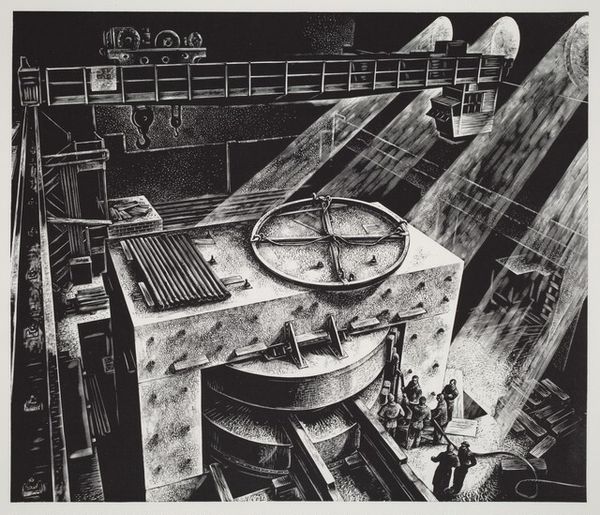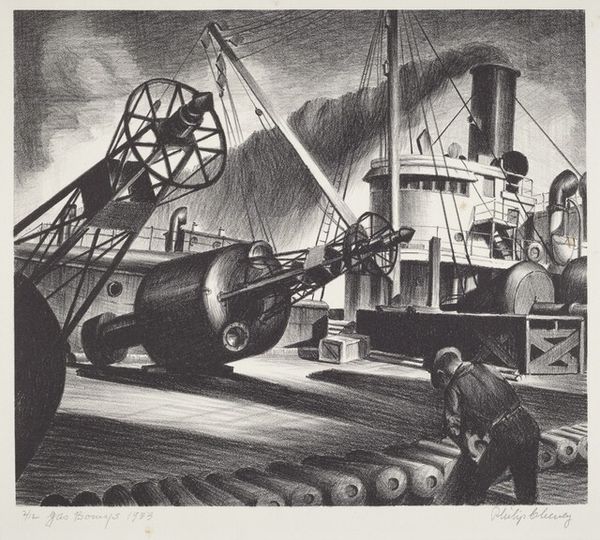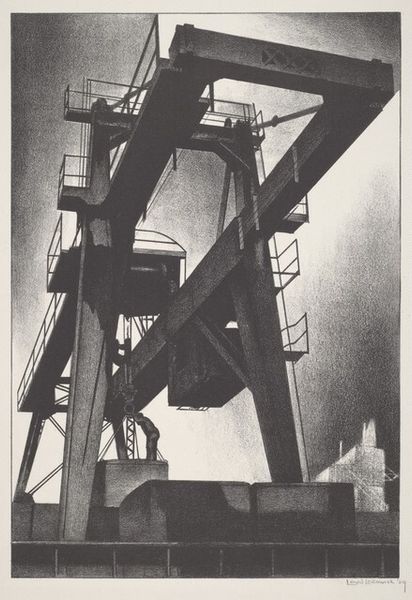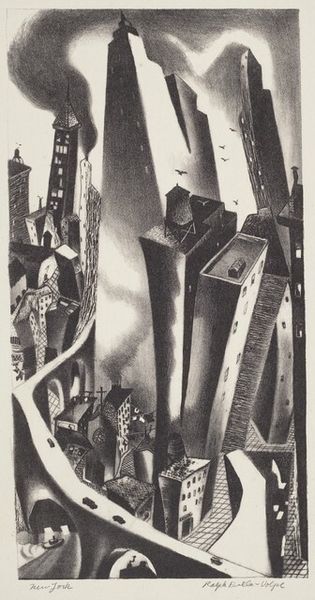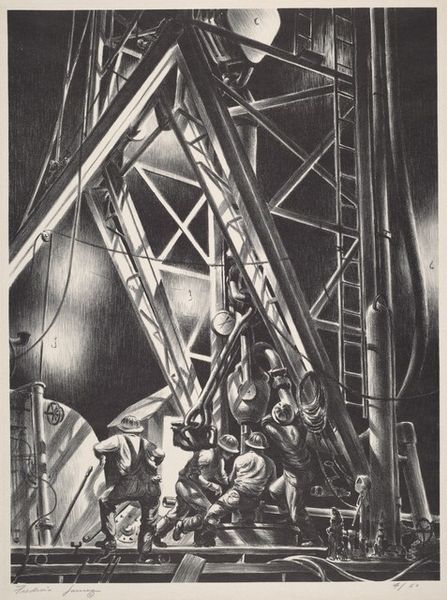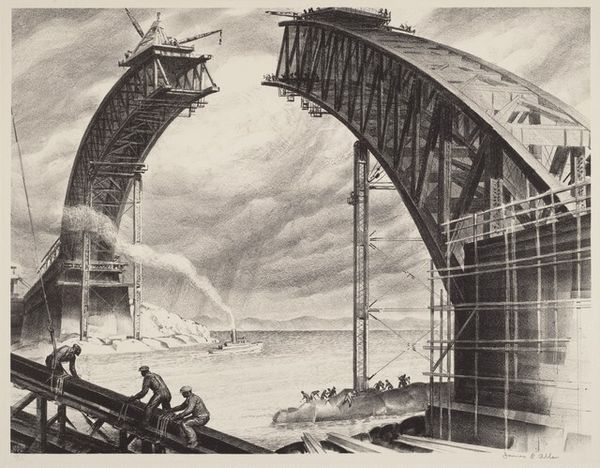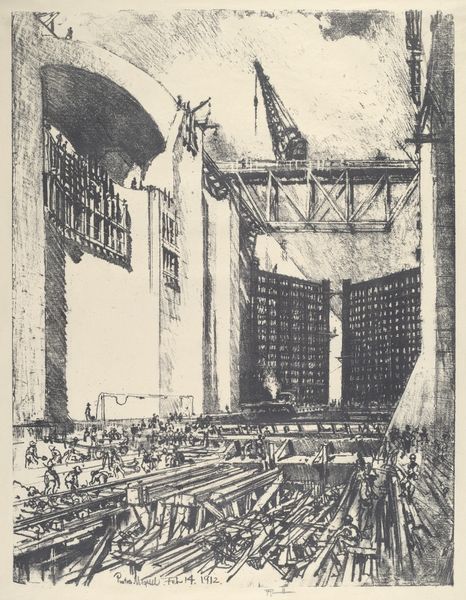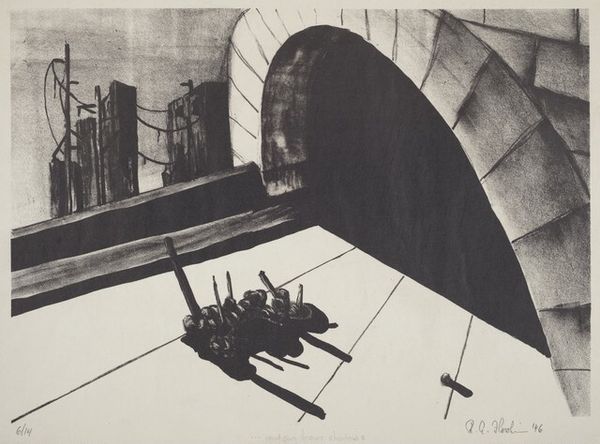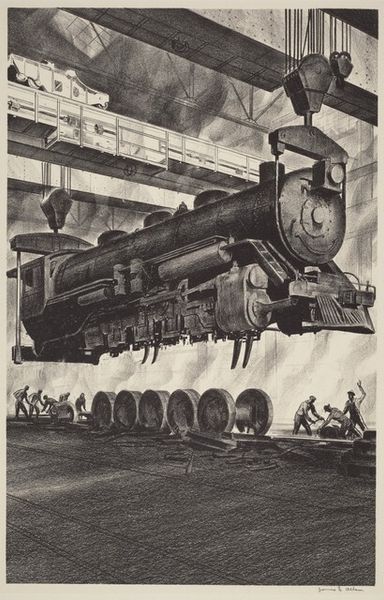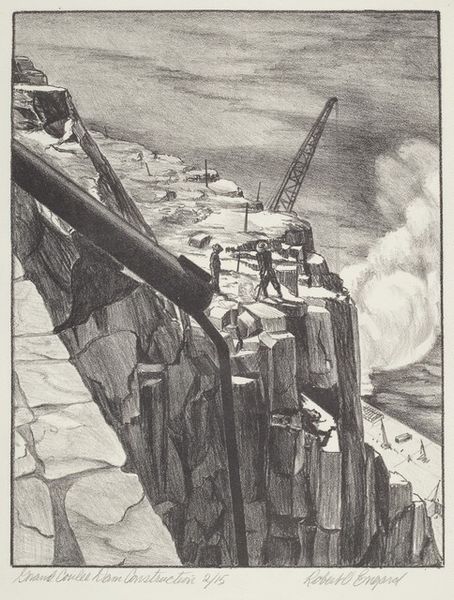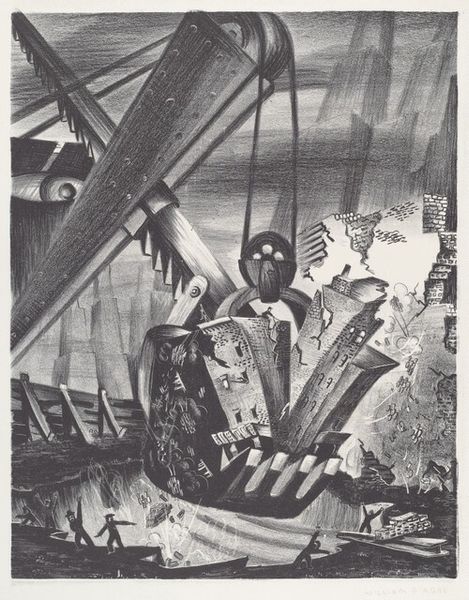
drawing, print, graphite
#
drawing
# print
#
graphite
#
cityscape
#
realism
Dimensions: Image: 278 x 225 mm Sheet: 400 x 288 mm
Copyright: National Gallery of Art: CC0 1.0
Curator: "The Steam Shovel" by Philip Cheney, created in 1934. It's a graphite print, rendered with such crisp detail, especially considering the medium. Editor: Wow, immediately it feels…stark, almost imposing. The steam shovel dominates, casting a shadow that makes everything else feel fragile in comparison. Curator: It's a classic example of American realism, glorifying the industrial age. Cheney focuses our gaze on this machine—a symbol of progress and power. But I see a critique too. Editor: A critique? I see more than metal! That bucket at the bottom reminds me of those wide-open maws in medieval depictions of hell, constantly devouring. It has such an ominous feel, even despite its association with creation. Curator: Precisely! While on the surface, it shows progress and modernity, beneath the surface are themes of man versus machine, the deconstruction of nature for progress. The artist is using it as this voracious symbol—but to what end? Editor: The figures give us clues. They seem so small and insignificant against this giant machinery. They seem destined to keep feeding it as though it has to be satiated like a monster. There’s an anxious tension created, almost a cultural memory of sorts—this insatiable appetite we've created and rely on. Curator: Absolutely, and note how high up in the sky the skyline climbs as opposed to our eye-level view of the shovel. The work almost reads as this impending sense of imbalance; a lack of perspective—an imminent disruption. Editor: Cheney seems to ask about what the future of progress and machines may be—are we beholden to our own inventions and, perhaps more pointedly, our drive for constant 'progress'? Curator: Indeed. The print pushes the viewer to question our role in an evolving industrialized landscape; maybe prompting an examination of the hidden cost we overlook to advance ourselves. Editor: It does, rather powerfully. Now that I understand Cheney’s visual cues, there is a lingering unease about what "progress" entails here. Curator: And that unsettling ambiguity is exactly what makes this print such a compelling reflection on our evolving world, even today.
Comments
No comments
Be the first to comment and join the conversation on the ultimate creative platform.
